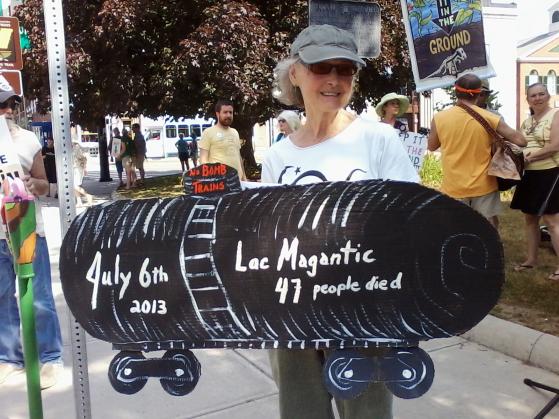

“Most times, people don't want regulations, (but) in this case, everybody wants them,” said Anthony Hatch, a rail transportation analyst and consultant. The amount of crude oil spilled last year was more than the total amount spilled in the 37 previous years, according to an analysis of federal data by McClatchy Newspapers. In 2013 that number ballooned to 415,000 carloads, according to the Association of American Railroads (AAR).

In 2008, there were 9,500 carloads of crude oil on the tracks in the country. “Steps must be taken to make rail cars safer and to ensure greater transparency in the transportation of hazardous materials,” Casey wrote.Ī sharp increase in North American crude-oil production - mainly because of fracking - has pushed a high percentage of crude oil onto the tracks. Secretary of Transportation Anthony Foxx. and Canada in which crude oil has spilled from ruptured tank cars, often igniting and resulting in huge fireballs, according to the National Transportation Safety Board.Now, state, federal and industry officials are demanding that regulations be put in place to improve the safety of the cars, which are “subject to damage and catastrophic loss of hazardous materials” when trains derail, according to the National Transportation Safety Board (NTSB).Īfter two recent derailments in Pennsylvania - one in Westmoreland County, one in Philadelphia - involving the cars and crude oil, U.S. Since 2008, there have been 10 significant derailments in the U.S. Rail shipments of crude oil have grown from a few thousand carloads a decade ago to 434,000 carloads last year, in part thanks to an oil fracking boom in the Bakken region of North Dakota, Montana and southern Canada. Railroad industry officials say safety benefits would be minimal and cost $12 billion to $21 billion, according to a CSX estimate. Electronically controlled brakes stop all the cars on a train at the same time rather than sequentially, which safety officials say can reduce the number of cars that derail in an accident.
#FRACKED OIL TRAIN CAR INSTALL#
The oil industry is also now opposing a proposal that oil trains be required to install electronically controlled brakes, a key concern for railroads. Shippers such as oil companies will bear most of the cost of tank car retrofits and design changes because they lease or own tank cars, not the railroads. The petroleum institute initially had opposed changing the 1232 car’s design, while the railroad industry sought extensive changes. But the design doesn’t include a thicker shell previously sought by the railroad industry. In a fire, the blanket helps prevent oil in tank cars that have not ruptured from overheating and exploding. The design adds safety features including “thermal blankets” between the shell of the tank car and an outer jacket. The oil and railroad industries have made concessions to agree on a safer design for newly manufactured cars. All are shipped in the same type of tank cars under government regulations. The government’s more aggressive timeline could hurt consumers by disrupting the production and transportation of goods including chemicals, gasoline, crude oil and ethanol, he said.


 0 kommentar(er)
0 kommentar(er)
